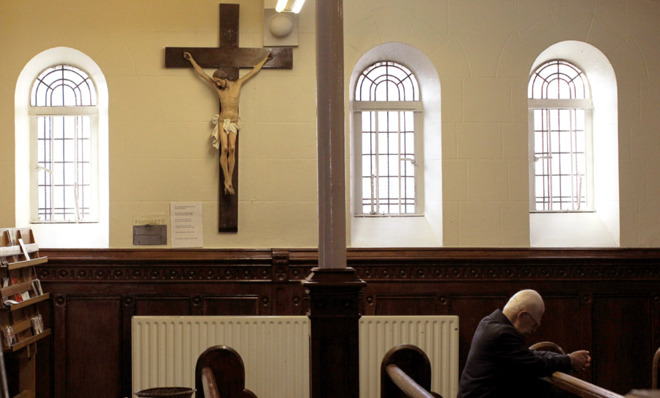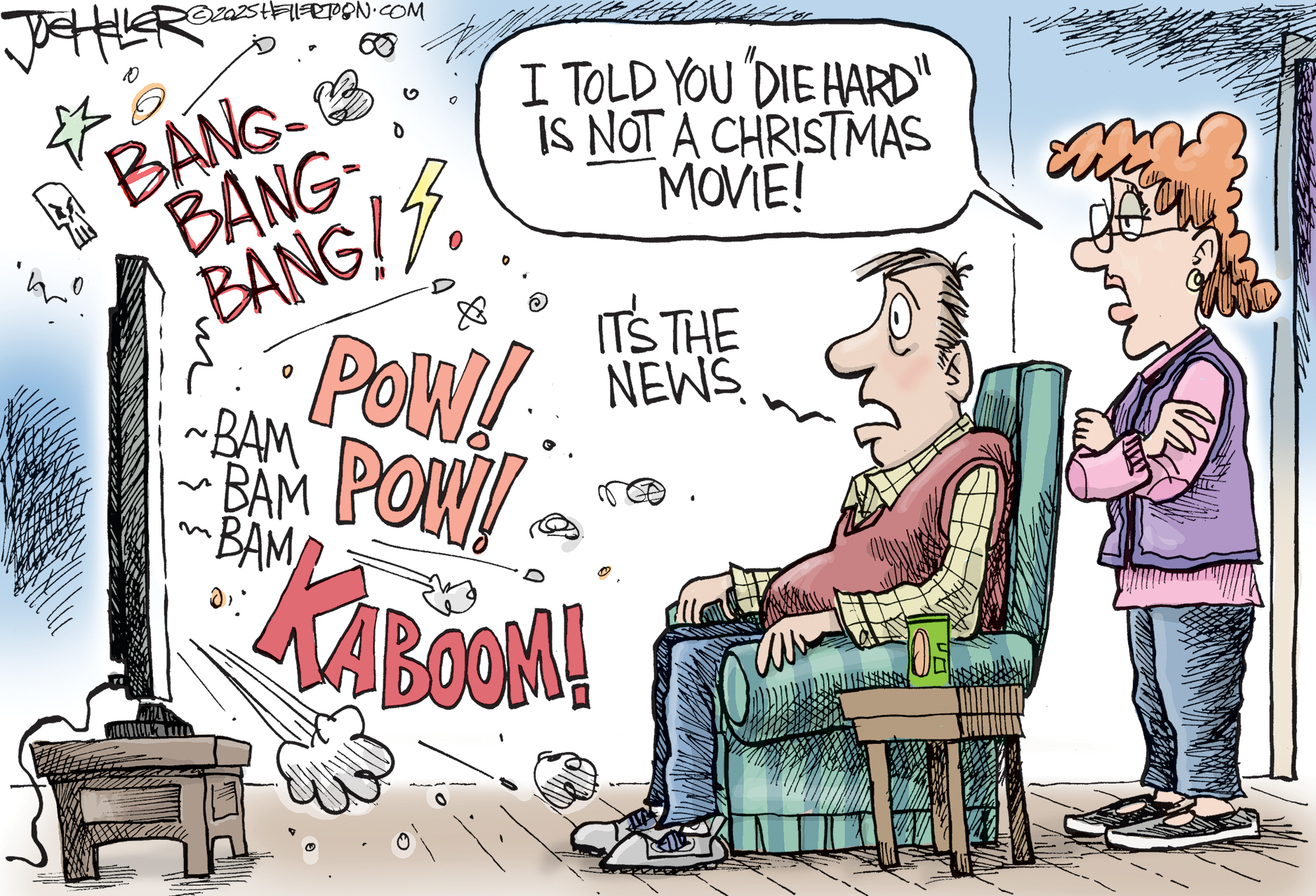Everything you need to know about Ireland's disaffected Catholics
Disgusted by waves of scandal, Ireland’s Catholics are boycotting Mass and turning their backs on the church

How Catholic was Ireland?
It used to be easily the most Catholic country in the world. The church's connection to the island nation dates to St. Patrick's conversion in the 5th century, and the modern Irish state is explicitly bound up with the church. The constitution opens with the words, "In the name of the Most Holy Trinity, from Whom is all authority..." and continues with reference to "obligations to our Divine Lord, Jesus Christ, Who sustained our fathers through centuries of trial." In Ireland, the church, not the state, runs almost the entire education system. Until recently, social life, too, revolved around the local church. In 1984, nearly 90 percent of Irish Catholics went to Mass every week. But by 2011, only 18 percent did. It's a massive cultural shift.
What changed?
The Week
Escape your echo chamber. Get the facts behind the news, plus analysis from multiple perspectives.

Sign up for The Week's Free Newsletters
From our morning news briefing to a weekly Good News Newsletter, get the best of The Week delivered directly to your inbox.
From our morning news briefing to a weekly Good News Newsletter, get the best of The Week delivered directly to your inbox.
Mass attendance began dropping rapidly during the 1990s, as Ireland began its "Celtic Tiger" economic boom. The country was modernizing, urbanizing, and taking on a more global perspective, and the local church was no longer the only nexus of community life. For the first time, the country had a vigorous debate about abortion and began teaching sex education in schools. At the same time, several long-hidden scandals began to emerge. In 1992, the Irish learned that a powerful and beloved bishop, Eamon Casey, had a fathered a son, and that the Rev. Michael Cleary, the "Singing Priest" with best-selling records and his own radio show, had a secret family with his housekeeper. But the biggest seismic jolt came over the last decade, when the priestly sex-abuse scandal horrified the entire country.
How widespread was the abuse?
The scale was greater in Ireland than in any other country. Across the world, the Vatican routinely protected individual priests who were raping boys and, to a lesser extent, girls, responding to complaints of abuse by transferring offenders to other parishes. Ireland had hundreds of such cases, but because of the church's enormous power there, it was not just individual priests who were involved, but large institutions. Until the 1990s, the church ran orphanages and industrial schools that warehoused 30,000 children deemed delinquents — pickpockets, or the poor, or those with unmarried parents. The 2009 Ryan Report found that thousands of children were savagely raped or molested in these homes, while thousands more were beaten and starved and forced to work. Boys described nights of terror, lying in bed waiting for priests to come and molest them. "In some schools a high level of ritualized beating was routine," the report said. A new scandal has rocked the church, with the recent discovery that up to 4,000 infants and children — many malnourished and poorly treated — had been buried in unmarked graves at homes for unwed mothers run by Catholic nuns.
How have the Irish reacted?
A free daily email with the biggest news stories of the day – and the best features from TheWeek.com
The string of revelations has undermined the very legitimacy of the church. To a great extent, the church's authority was premised on control of sexuality. "They made this island into a concentration camp where they could control everything — and the control was really all about sex," says Father Mark Patrick Hederman, abbot of Glenstal Abbey. "Generations of people were crucified with guilt complexes. Now the game is up." Since priests were the enforcers of sexual purity, to have so many exposed not merely as sexually active, but as sexual predators of children, has deeply shaken Irish faith. The priesthood has lost its luster, and enrollment at seminaries has plummeted.
Will there be a priest shortage?
There already is. In Dublin, there are just two priests under the age of 40. Across the country, two thirds of priests are over 55. Some towns are already sharing priests, having Mass at the local church only every other week. In about a decade, church authorities say, the number of priests in Ireland may decline to 1,500 — down from 4,500 a few years ago — and the church will have to start importing priests from other countries. Well over 80 percent of the Irish still identify as Catholics, but now they practice their religion privately. Tourism at Station Island, where St. Patrick had his religious epiphany in the 5th century, is way up. Disaffected Catholics are using the site as a kind of private church, a way to worship unmediated by the hierarchy.
What will the church do?
The Association of Catholic Priests, an Irish group, has recommended that women be ordained and that priests be allowed to marry. Surveys have found that the Irish people would support both changes by huge margins: 77 percent for women's ordination and 87 percent for married priests. Even in the unlikely event that the Vatican approved such changes, it may be too late to reverse Ireland's secular tide. "No one doubts that a growing anti-Catholic element exists in Irish society," Father Gerard Moloney wrote in The Irish Times. "The church has provided its enemies with weapons of mass destruction. It has no one to blame but itself."
Northern Ireland, too
Northern Ireland, which is part of Great Britain, has seen nearly as steep a decline in weekly Catholic Church attendance, from 90 percent in the 1980s to some 40 percent today. That drop is not the result of the abuse scandal alone. In fact, in Northern Ireland, the official inquiry into priestly abuse didn't begin until last fall, and it has yet to release its findings. But Northern Ireland was the center of the Troubles, the violence between Protestants and Catholics, and there Catholicism was as much a political identity as a religious one. Once the Good Friday Agreement of 1998 ended the armed struggle, religious adherence began to fade as political polarization eased. Now, overt religiosity is widely seen as backward — as a form of resistance to peace. "There's no stigma in not going to church," said William Crawley, a Presbyterian minister in Belfast. "In fact, there's a stigma to going. Parents need to explain why they are sending their children to church."
-
 Political cartoons for December 21
Political cartoons for December 21Cartoons Sunday’s political cartoons include Christmas movies, AI sermons, and more
-
 A luxury walking tour in Western Australia
A luxury walking tour in Western AustraliaThe Week Recommends Walk through an ‘ancient forest’ and listen to the ‘gentle hushing’ of the upper canopy
-
 What Nick Fuentes and the Groypers want
What Nick Fuentes and the Groypers wantThe Explainer White supremacism has a new face in the US: a clean-cut 27-year-old with a vast social media following